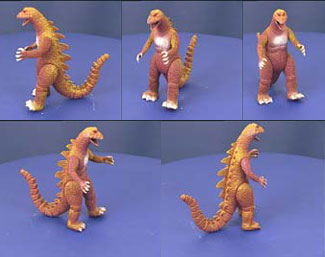Computerized vision, E-commerce and Missing Data Matrix

The factorization technique consists in decomposing a matrix into the product of two matrices, by using the fact that the matrix has a reduced rank. Different methods can be used to factorize a given matrix, according to the problem to solve. The Singular Value Decomposition (SVD) is in general used when the matrix is full. However, in the case of a missing data matrix, other methods such as the Alternation technique should be used. This technique consists in computing each factor alternatively until convergence.
This thesis is focused on the Structure from Motion (SFM) problem, which consists in extracting the 3D positions of tracked feature points as well as the relative camera-object motion from 2D trajectories of these points projected into the image plane. These trajectories are stacked into a matrix that is obtained by multiplying the motion matrix, which contains the relative camera-object motion, and the shape matrix, which contains the 3D positions of the feature points. Since trajectories are not complete in real situations, the matrix of trajectories has in general missing data. This thesis proposes to adapt the Alternation technique to tackle the SFM problem, for both single and multiple objects cases.
In addition to the SFM problem, this thesis also shows other applications that can be addressed by means of factorization techniques. Concretely, the Alternation technique, which is used through the thesis, is adapted to address each particular problem. The first proposed application is the photometric stereo: the goal is to recover the reflectance and surface normals and the light source direction at each frame, from a set of images taken under different lighting conditions. In a second application, the aim is to fill in missing data in gene expression matrices by using the Alternation technique. These matrices are generated taking information provided by DNA microarrays. Finally, the Alternation technique is adapted to be applied in recommender systems, widely considered in E-commerce. The idea of recommender systems is to predict the rates that a particular customer would give to items, by using information stored in the system.
References
"Missing Data Matrix Factorization Addressing the Structure from Motion Problem". PhD Thesis presented by M. Carme Julià Ferré, directed by Angel D. Sappa and Felipe Lumbreras. Presented on february 25th in the Centre de Visió per Computador (CVC).


